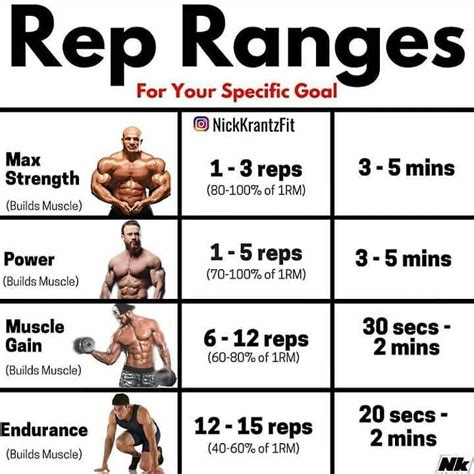rep ranges are bull shit ,Rep Ranges: Do They Really Matter? ,rep ranges are bull shit, Mix It Up: Combine high-rep sets with low-rep sets in your workouts. Stay Consistent: Make high-rep training a regular part of your routine. Progressive Overload: . $67K+

When it comes to muscle building, rep ranges have been given an almost mythical status in the fitness world. For years, trainers, coaches, and gym enthusiasts alike have subscribed to the idea that specific rep ranges—usually somewhere between 5 and 8 reps—are the holy grail for muscle growth. But is this truly the case? And more importantly, does it even matter in the grand scheme of things? The truth is that rep ranges are not nearly as important as they’ve been made out to be. In fact, they might just be a limiting belief that hinders the progress of countless lifters.
Does Anyone Stay in the 5-Rep Range?
Let’s get straight to the point: Do you *really* need to stick to the 5-7 rep range to build muscle? It’s a common belief that low reps (5-7) with heavier weights are ideal for hypertrophy (muscle growth), but there’s an issue here—this idea doesn't reflect the full spectrum of muscle growth mechanisms. While it’s true that lifting heavy weights in the lower rep range can stimulate muscle fibers, it’s not the only game in town. In fact, lifters who exclusively stay in this range might be missing out on key growth potential.
In reality, muscle growth (hypertrophy) is driven by several factors including time under tension, muscle fatigue, and metabolic stress—things that aren't necessarily maximized by staying in the 5-rep range. The idea that 5 reps is a “magic number” for stimulating muscle growth simply doesn’t hold up when you break down the full picture.
Rep It Out: The Truth About Rep Ranges And Muscle Growth
The key to muscle growth is progressive overload and variation, not arbitrary adherence to a set rep range. Let’s take a step back and think about the way our muscles work. Muscle fibers are activated based on a variety of factors, including the intensity (weight) lifted, the duration of the set (time under tension), and the overall volume (total reps and sets) performed. The reality is that there is no singular rep range that will always be the best for everyone or in every situation.
One of the biggest flaws in focusing too heavily on rep ranges is the idea of a one-size-fits-all approach. The “5-rep range” might be effective for some lifters, especially those who are training for strength, but it doesn’t mean that higher rep ranges (8-12) or even lower rep ranges (3-4) don’t have their place in a balanced program.
The Weightlifting Rep Range: Understanding the Science
Research on rep ranges and muscle growth reveals that there's more flexibility than we think. It turns out that both high and low rep ranges can be effective in their own right, depending on the training context and goals.
- Low Reps (1-5): These are typically associated with maximal strength training. They require very heavy weights and allow you to build strength and power. While these lower reps don't typically produce as much metabolic stress or hypertrophy on their own, they can lead to greater overall muscle mass by increasing the amount of weight you can lift. More weight lifted over time equals greater hypertrophy.
- Moderate Reps (6-12): This is where most muscle-building programs live, and with good reason. Moderate rep ranges create a solid balance between mechanical tension, metabolic stress, and muscle fatigue—three key factors for hypertrophy. But even here, there’s no magic number. Some lifters might thrive in the 6-8 rep range, while others see better results in the 10-12 range.
- High Reps (15+): High rep training can lead to substantial muscle growth by increasing metabolic stress and muscle fatigue, which are two other key mechanisms for hypertrophy. This is why some bodybuilders or endurance athletes might opt for higher rep ranges. Not only do they build muscle, but they also improve local muscular endurance and aerobic capacity.
In short, the rep range is just one piece of the puzzle. Trying to find a "perfect" rep range is missing the point—the goal should always be progressive overload, smart program design, and consistency.
Reps and Muscle Building: Debunking the 5 vs. 8 Debate

rep ranges are bull shit From the refined delicacy of 18K Sedna™ gold watches, with an intricate automatic movement or an extraordinarily precise quartz mechanism, to the timeless style of stainless steel watches .
rep ranges are bull shit - Rep Ranges: Do They Really Matter?